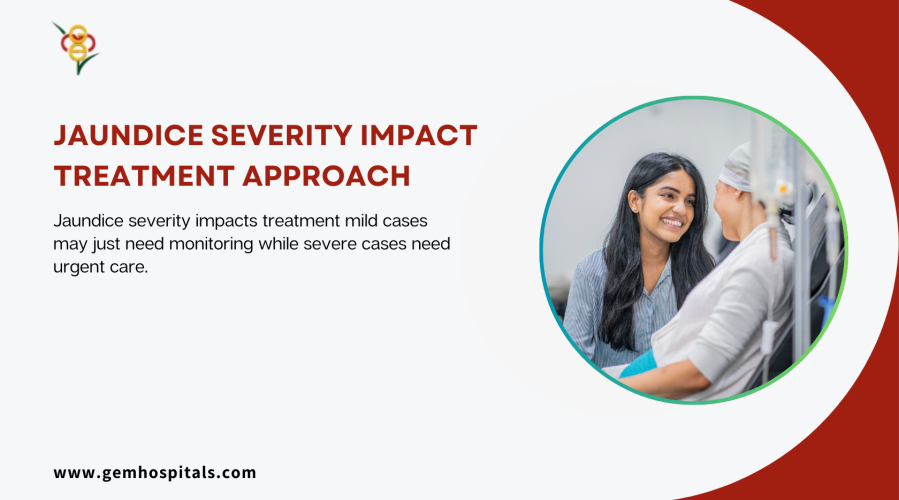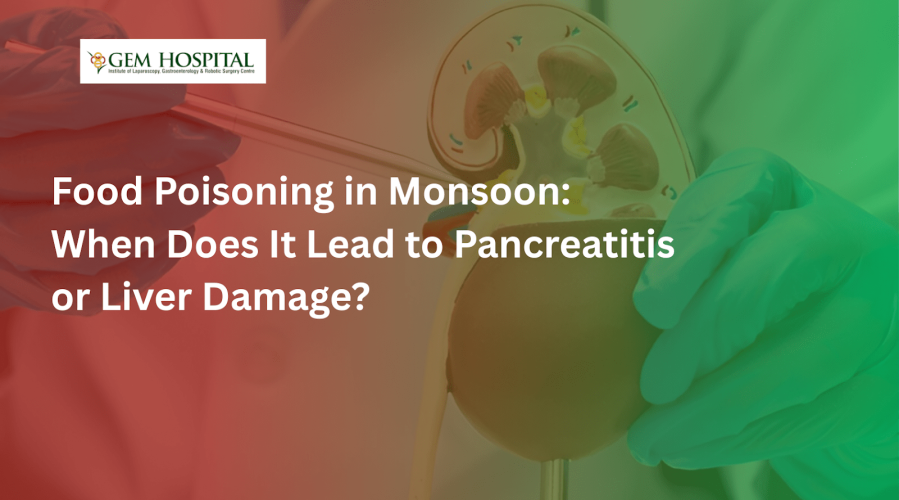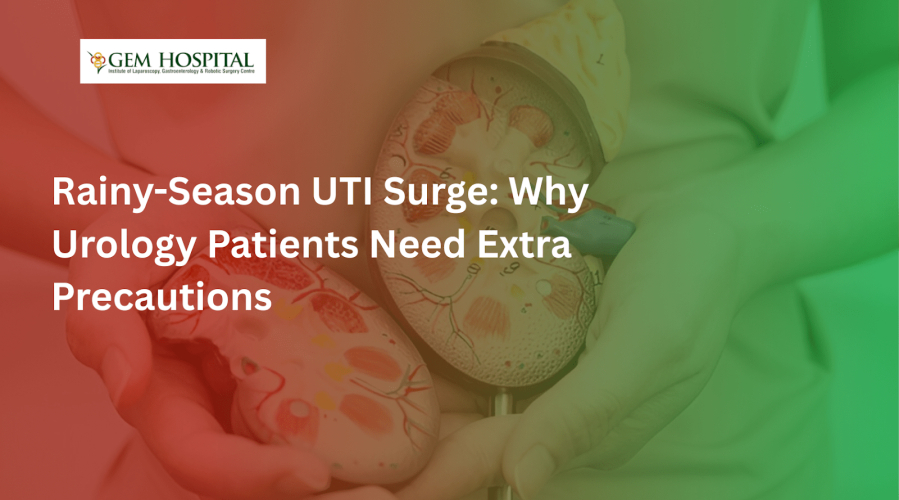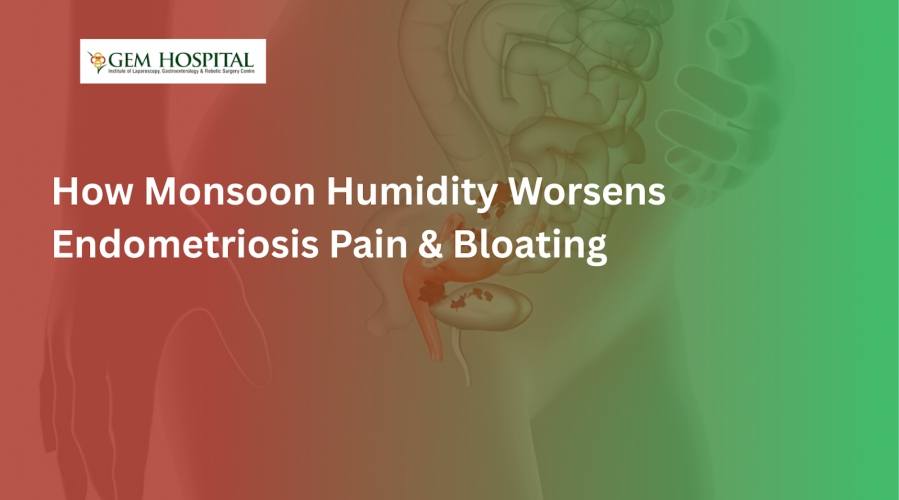Food poisoning is common during the monsoon. Learn when it becomes serious, how it can lead to pancreatitis or liver damage, warning signs, and when to seek medical care.
How Does Jaundice Severity Impact Treatment Approach?

The condition known as jaundice, characterized by yellowing of the skin and eyes, is caused by an accumulation of bilirubin, a yellow pigment formed during the breakdown of red blood cells. Jaundice is not a disease, but a sign of a disease, and its intensity suggests the presence of different diseases. It is therefore important to understand the level of jaundice in order to decide on the correct management plan. Here we highlight the nature of treatment of jaundice depending on the level of intensity, the need for early treatment and the ways of proper care for the liver after jaundice.
Understanding Jaundice Severity Levels
The degree of jaundice can be mild, moderate or severe, and all of them present with different symptoms. While a mild form of jaundice the skin or the sclera of the eyes may have a slight yellow tinge, a severe form of the illness will see the patient having intense yellowing of the skin and abdomen pains, fatigue. Severity measures how high bilirubin levels are in the blood and helps the doctors make the right treatment plan for the patient.
Causes and Factors Affecting Jaundice Severity
Jaundice can result from a variety of causes, with certain factors influencing its progression:
- Primary Causes: Some of them are liver diseases like hepatitis, obstructive jaundice that results from bile duct obstruction, some infections and genetic liver diseases. Jaundice in newborns is quite common because the liver is not fully developed at birth; however, this type is commonly transient.
- Factors That Affect Severity:
- Age: It is also important to note that newborns and older adults are likely going to feel the effects more severely and will be more susceptible to complications.
- Overall Health: Patients with chronic diseases like diabetes or chronic kidney disease may get severe jaundice.
- Pre-existing Liver Conditions: Those who have had previous liver complications such as cirrhosis or fatty liver are more likely to develop severe jaundice since the liver will already be hard pressed to manage bilirubin..
Knowing these causes and risk factors helps the doctors to be more specific in managing the condition with a view of eradicating the cause of jaundice as well as dealing with the symptoms.
Diagnosis and Severity Assessment
The main principle of jaundice treatment is diagnosis. When jaundice is suspected, doctors will conduct several tests to gauge the severity and underlying cause:
- Blood Tests: These are important in determining bilirubin and liver enzymes and other liver function tests. Elevated levels of bilirubin in the blood prove jaundice, while liver enzymes tests provide more accurate information about liver injury or disorder.
- Imaging Tests: A scan by ultrasound or MRI may reveal blockage of the bile ducts, gallstones, or liver disease which may be causing jaundice. This imaging offers a better picture of the structure of the liver to help physicians on whether or not the patient requires surgery or other treatments.
- Severity Classification: Depending on the results of tests, jaundice is divided into mild, moderate, or severe, which can be treated differently. If the origin of the problem is still unknown, additional tests, including liver biopsies, may be taken.
The comprehensive diagnostic process used in the treatment process ensures that the exact cause of the problem is determined and that the treatment corresponds to the patient’s condition.
Treatment Approaches Based on Jaundice Severity
Jaundice treatment is as diverse and depends on the severity of the condition and the cause of the disease. Here’s how treatment may vary at each level:
- Mild Jaundice:
- Monitoring: In mild cases, doctors usually just observe bilirubin levels without intervention because mild jaundice may disappear on its own.
- Lifestyle Adjustments: The patients are encouraged to take a lot of water, maintain a balanced diet and avoid alcohol because they can cause liver stress.
- Follow-up Appointments: It is crucial to attend follow-up appointments because bilirubin levels should return to normal and any worsening must be identified.
- Moderate Jaundice:
- Medication: Medications may be prescribed to lower bilirubin levels or treat the underlying cause, such as antibiotics for infections.
- Dietary Changes: It may be necessary to give drugs that reduce bilirubin levels or address the cause, for instance, antibiotics for infections.
- Observation in a Medical Setting: This may require a specific diet that is low in fats and sugars especially those patients that have liver issues.
- Severe Jaundice:
- Emergency Treatment: Thus, some patients with moderate jaundice may be hospitalized for a short time to observe the symptoms and avoid their deterioration.
- Intravenous Medications and Fluids: Intravenous fluids and drugs may be given to make the patient stable and to avoid acute liver failure.
- Surgical Intervention: Sometimes, the blockage in the bile ducts may require surgery or if part of the liver is damaged, surgery may be needed.
- Specialized Care at GEM Hospital: Severe cases are treated by specialized healthcare facilities such as GEM Hospital where patients can take advantage of advanced facilities that can handle such conditions as jaundice.
Risks of Delayed Treatment in Severe Cases
When jaundice is left untreated, especially in severe cases, the risks can be significant:
- Progression to Liver Failure: In case of failure to treat severe jaundice, the affected liver may fail and the consequences are usually fatal.
- Increased Risk of Complications: High bilirubin levels for an extended period may cause other health problems like problems with the kidneys or blood clotting.
- Reduced Chance of Full Recovery: If the condition is diagnosed in its early stage, the probability of the patient being cured is high as the liver and other organs will not have been damaged for good.
But if the patients act fast especially for the severe cases, then they can eliminate these risks and have a better future health.
Managing Jaundice and Supporting Liver Health
The liver should then be protected from further damage in order to avoid a relapse of the disease and to improve the person’s quality of life. Here are some steps that can support liver health:
- Routine Health Checks: Such repetitions help the doctors to control the state of the liver and solve problems that may occur in time.
- Balanced Diet: The liver is fed by a diet that includes fruits, vegetables, whole grain products, and lean meats. Excluding foods with high levels of processing, alcohol and foods with high sugar content can also help lessen the load on the liver.
- Staying Hydrated: When you take the right amount of water in a day it helps in the functionality of the liver and also in removing toxins from the body.
- Avoiding Toxins and Medications that Stress the Liver: A few non-prescription drugs and certain pollutants in the environment can also affect the liver, so you should discuss any medications that you are currently taking with your doctor.
Book Your Consultation Today!
If you or someone you know is experiencing jaundice symptoms, seeking prompt medical advice is key to effective treatment. The expert team at GEM Hospital is dedicated to offering personalized care and advanced treatments for jaundice and liver-related issues.
Book your appointment today to receive specialized support in managing jaundice and ensuring long-term liver health.
Blogs & Article
UTI cases often rise during the rainy season. Learn why urology patients need extra precautions, common causes, symptoms, and prevention tips to stay healthy during monsoon.
Monsoon humidity can worsen endometriosis pain and bloating. Learn how weather changes affect symptoms and discover practical tips to manage discomfort during the rainy season.


